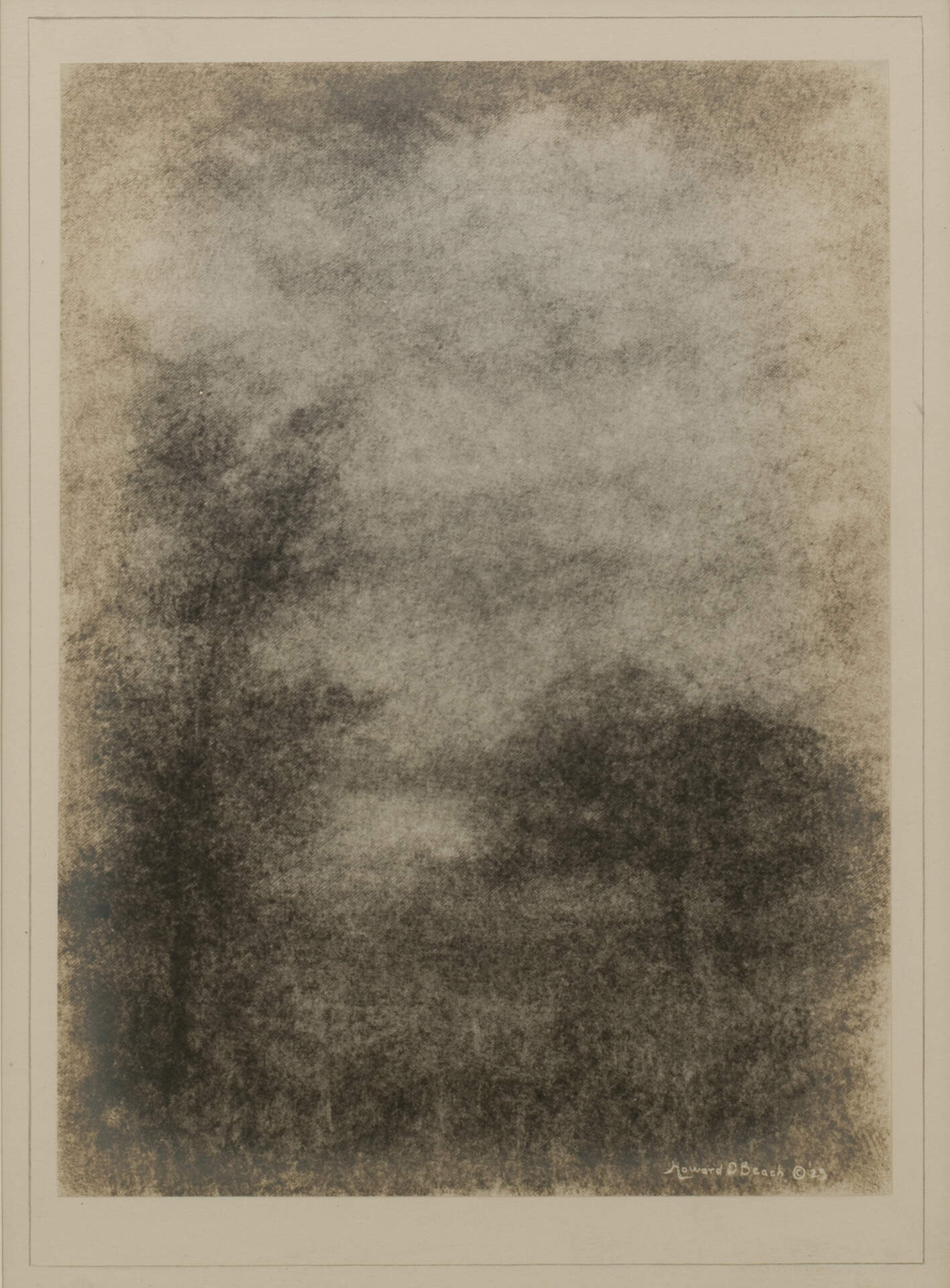Howard D. Beach (1867-1954)Untitled landscape
1923
Mutotone photograph
image: 12 1/2 x 9 1/4 inches; frame: 24 x 19 7/8 x 1 inches
Gift of Ulysses J. and Melinda M. Kontos in honor of Anthony Bannon, 2017
Howard D. Beach was a photography pioneer and inventor of the seamless Beach Universal Lens, which is still used today in blended bifocal glasses. He apprenticed for photographer Andrew Simson, became a partner in 1896, and bought the studio in 1900. During the 1901 Pan-American Exposition, he brought members of the Indian Congress to his studio to create dignified portrait photographs. In 1908, Beach purchased the Buffalo studio of Eleck F. Hall, who continued to operate it until 1910.
In 1913, Beach invented the mutotone process, giving his photographs a hazy pictorial quality. The process involves layering a series of carbon prints on top of one another. Sometimes he added color. This mutotone is among his finest, notable for his delicate handling of the carbon process.
Beach was a Renaissance man who painted, worked in pastel, wrote about photography, and lectured. He served in executive positions of the Buffalo Camera Club, Buffalo Photographers’ Society, Photographic Society of New York, and Buffalo Society of Artists. He created the Beach Multi-Focal Camera Lens in 1929, which was manufactured by the Wollensak Optical Company. He was president of the first International Photographers Association of America, and in 1939 received an honorary Master of Photography degree from the Photographers Association of America. —NW
